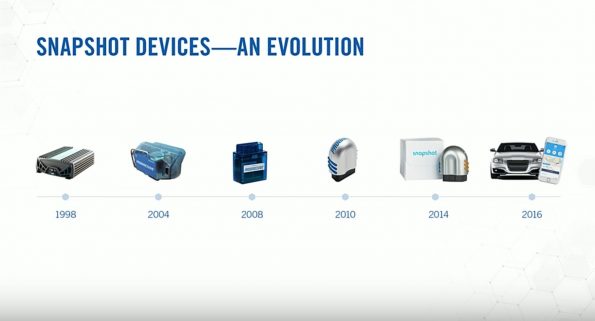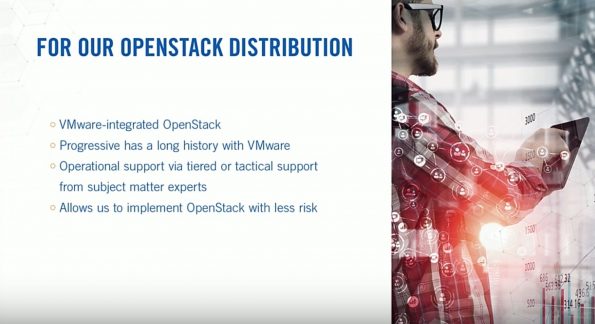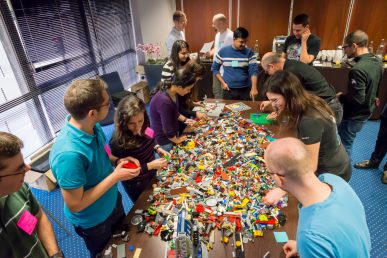Even in a sector ruled by data, Progressive Insurance stands out. One of the largest car insurers in the United States, they were already pushing the envelope back in 1987 by holding the first large-scale security analyst’s meeting. These days, Progressive has a product called Snapshot, offered as an app or a plug-in device, that bases customer’s insurance rates on their actual driving habits.
Devices used to measure driving have undergone an evolution over the last 20 years, says Progressive’s Rick Bliss. The original 1998 device plugged into the ODB port in your car then shipped back to Progressive for analysis. In 2010, the device went wireless and later became an app. The large amount of data collected (2,827,247,891 trips!) means that these devices have traveled farther than the Voyager spacecraft.

Progressive employs thousands of IT professionals working on data solutions. The analysis of all that driving data meant that they needed to try things out and fail fast. The team needed to build its infrastructure as a service to enable that and get successful models out to its customers quickly.
In addition, said Bliss, Progressive wanted to honor that data by protecting it. “We need to care about customer data, we need to care about that security, and we need to make sure that data is secure and never gets in the wrong hands,” he said.
The cloud you experiment on often becomes the cloud you go to production with. That’s why the Progressive team chose OpenStack. However, they’re also looking to Kubernetes as a way to abstract that even further, allowing them to move workloads around as the enterprise needs and not having that affect their customers or IT workers.

Further, the team chose VMware-integrated OpenStack as its on-premise cloud, since it helped the company integrate its already existing vSphere environment, said Jeff Maruschek, speaking with Bliss at the recent OpenStack Summit Vancouver. “We wanted to utilize that support structure and also experiment with OpenStack at the same time and we felt that VIO kind of solved that for us,” he said.
Ultimately, the Progressive team went from 100 percent physical servers in 2004 to a production environment with more virtual machines than physical in 2009. Now Progressive uses data centers full of Cisco UCS blade servers and is evaluating hyper conversion for structures.
They also choose Red Hat OpenShift as their application platform-as-a-service, or aPaaS. It helps manage some of the issues Kubernetes can have, like a weaker RBAC authorization system, said Bliss. “OpenShift gave us many levels of interactions,” he said, “[including] a product called Source to Image.” This lets Bliss and his colleagues web-hook their GitHub code as a node app, put it in a container and then build and spin it up all in one go.
Ultimately, said Bliss, OpenStack is an important part of the data puzzle at Progressive. “We see OpenStack as a way to actually bridge all that together [and] automate it. Automate it all and self-service when you can’t automate it.”
It’s not about just specific tools, he concluded, but about culture and embracing change. “That’s been where a lot of our work has been done — educate, educate, educate. Say why these tools actually help us do things faster [and] why they are valuable to our business.”
To see the whole 30-minute presentation, check out the video below:
- Yes it blends: Vanilla Forums and private clouds - November 5, 2018
- How Red Hat and OpenShift navigate a hybrid cloud world - July 25, 2018
- Airship: Making life cycle management repeatable and predictable - July 17, 2018

)










